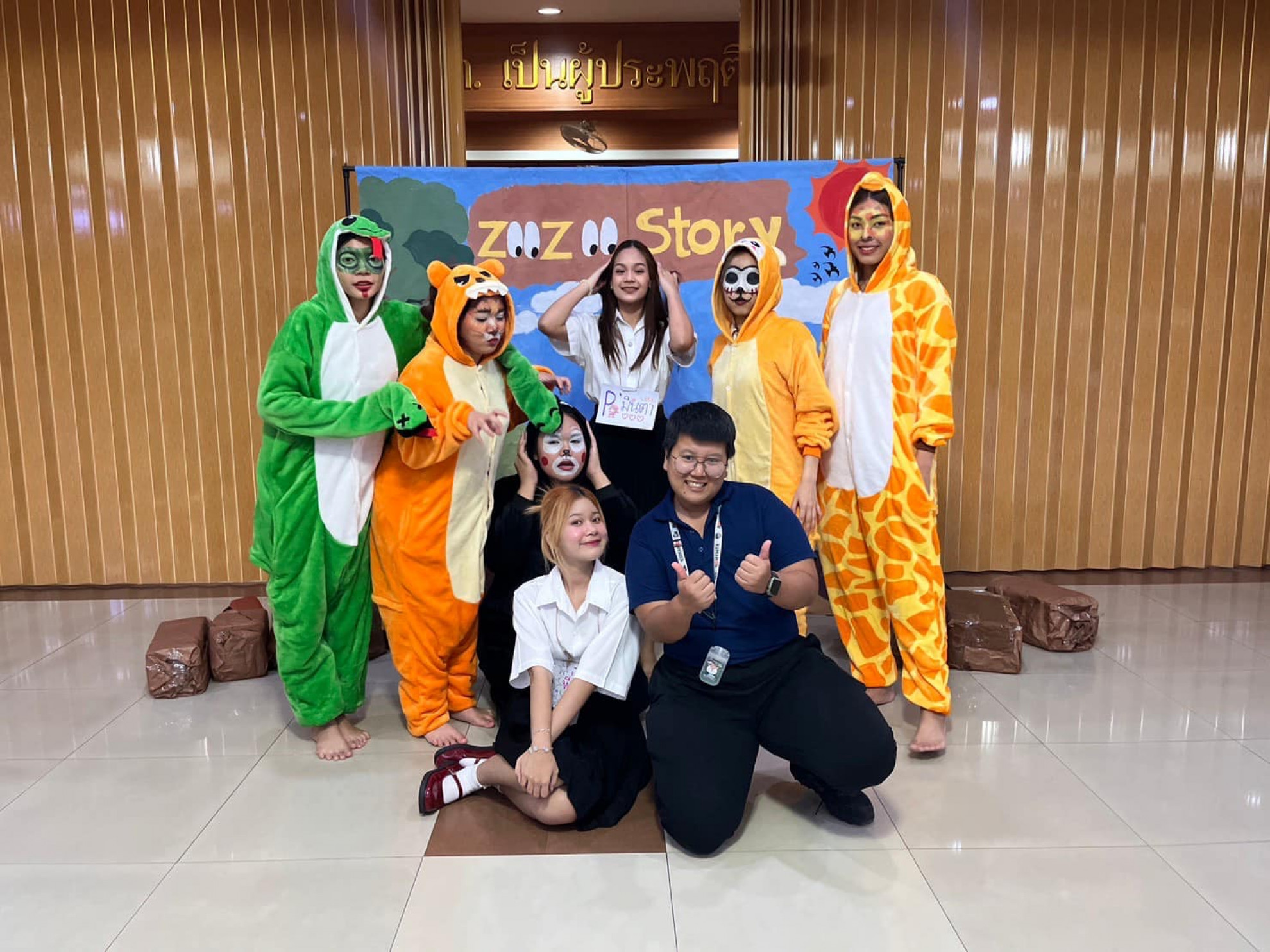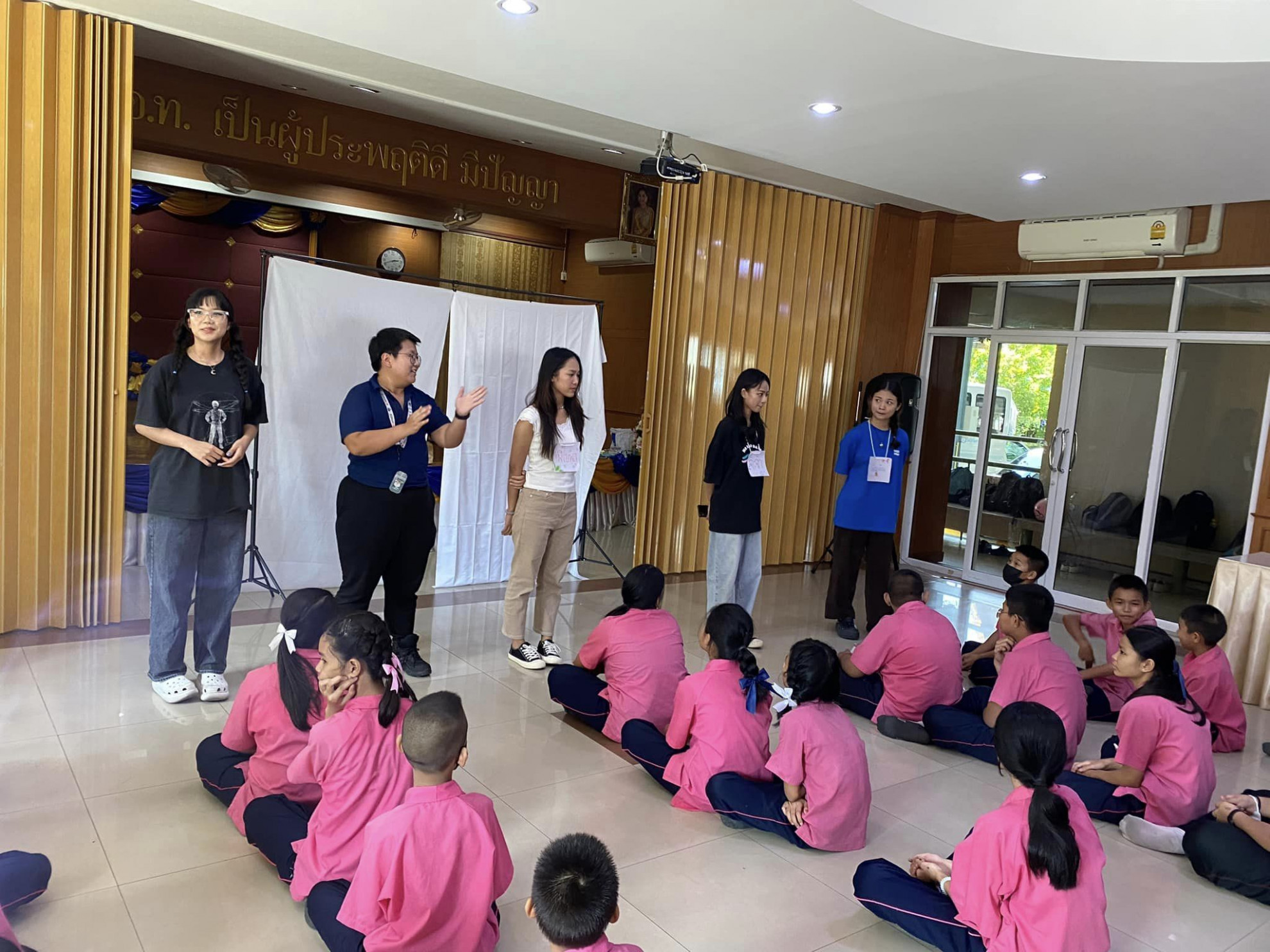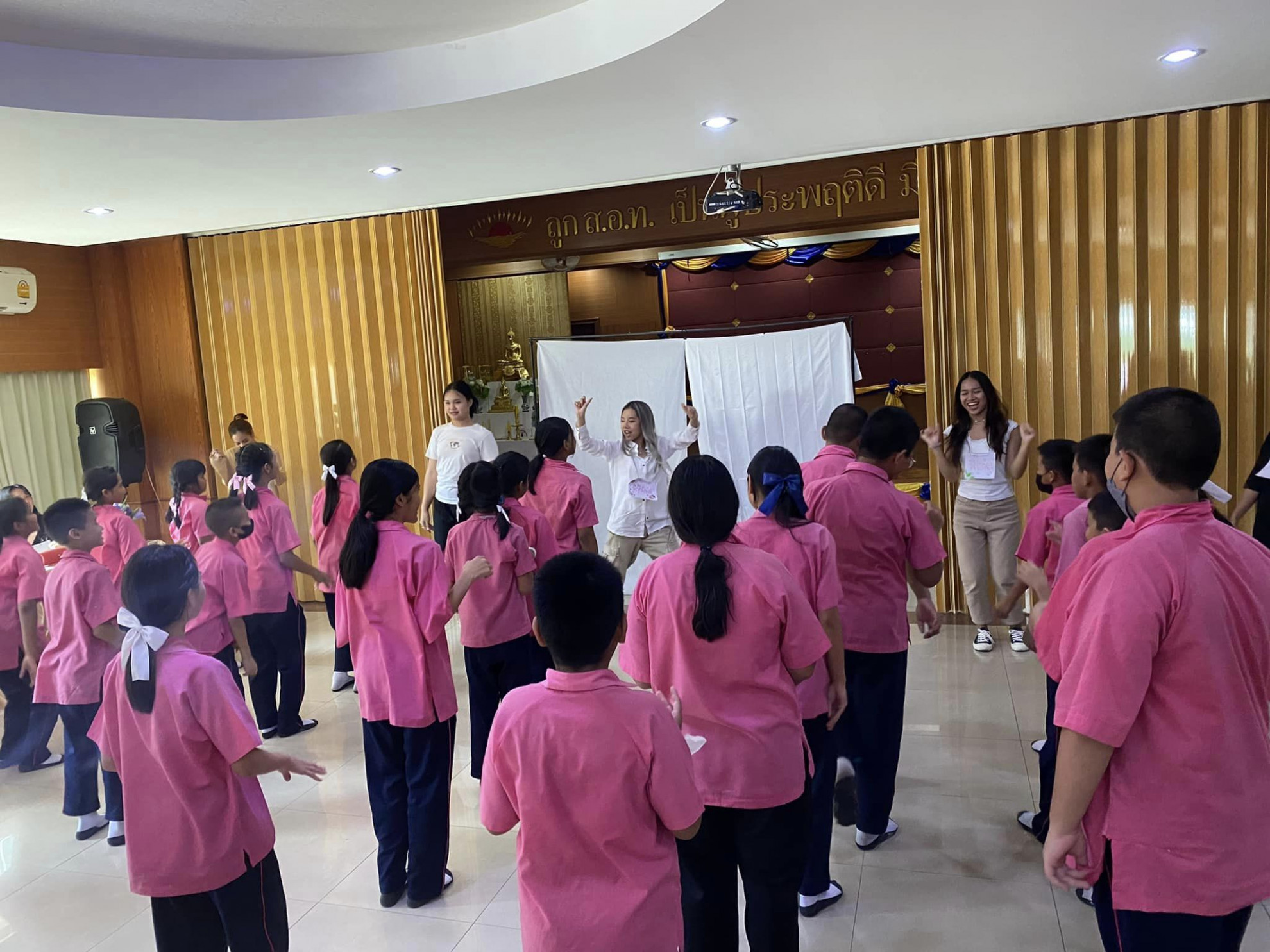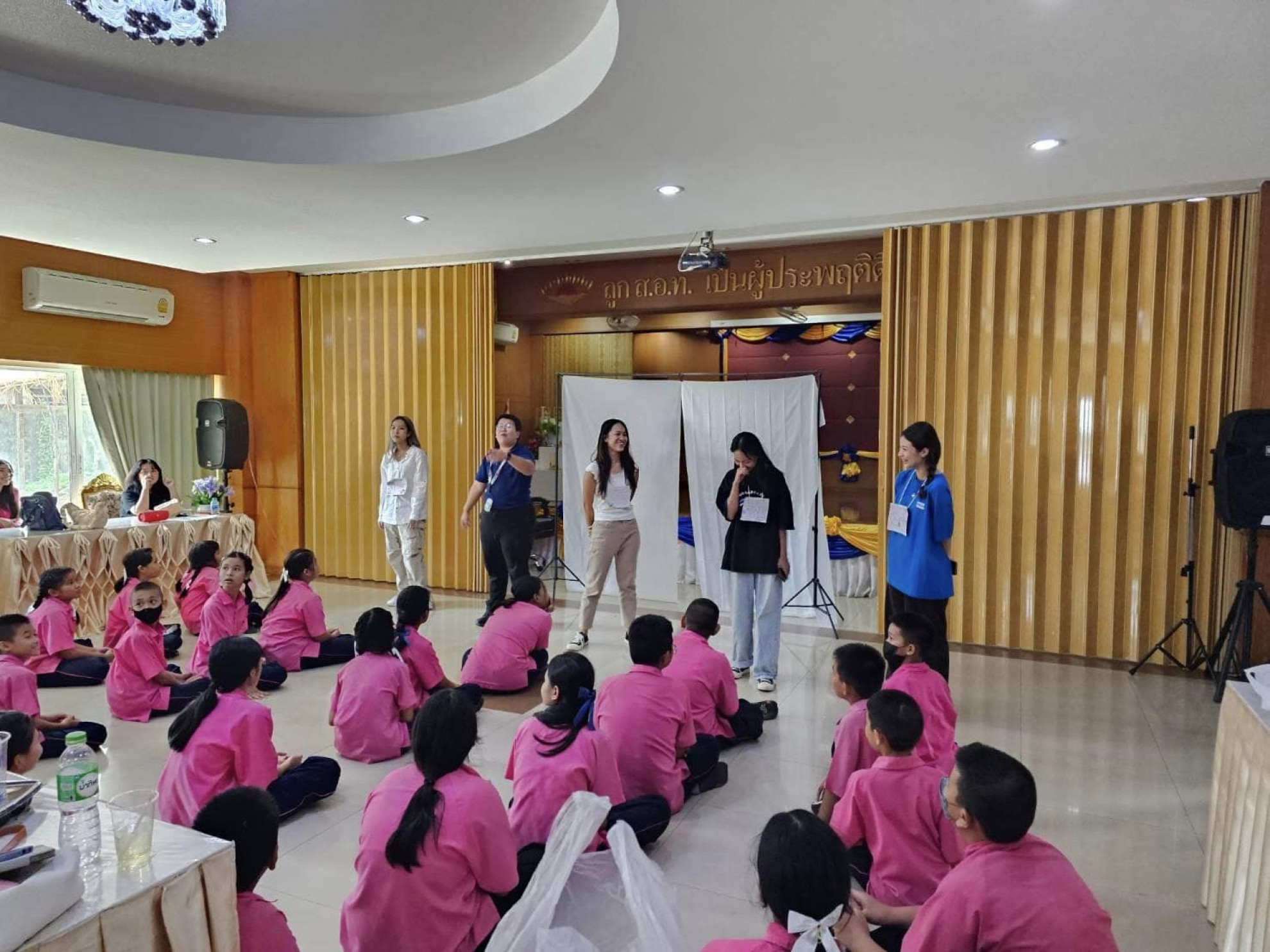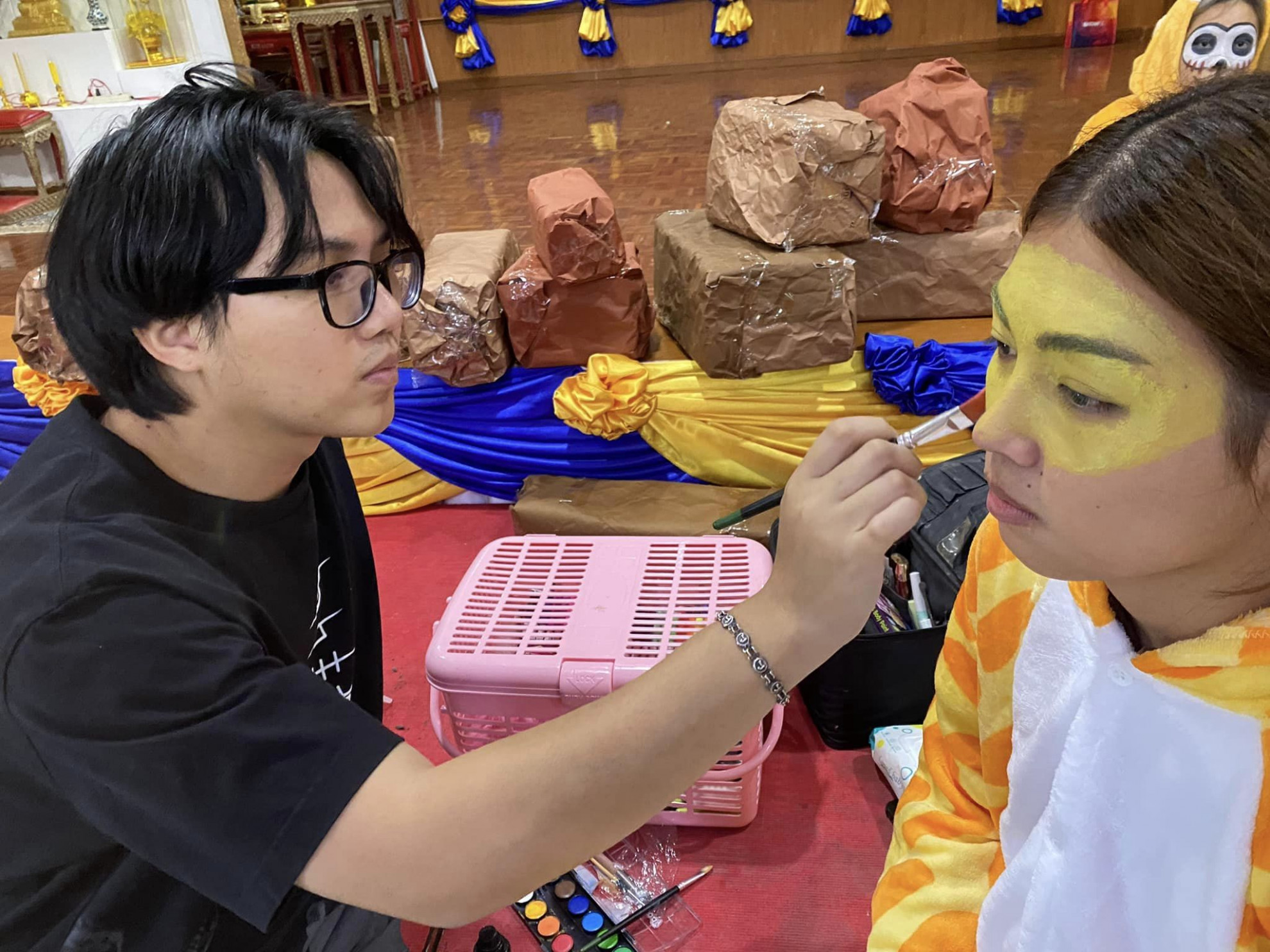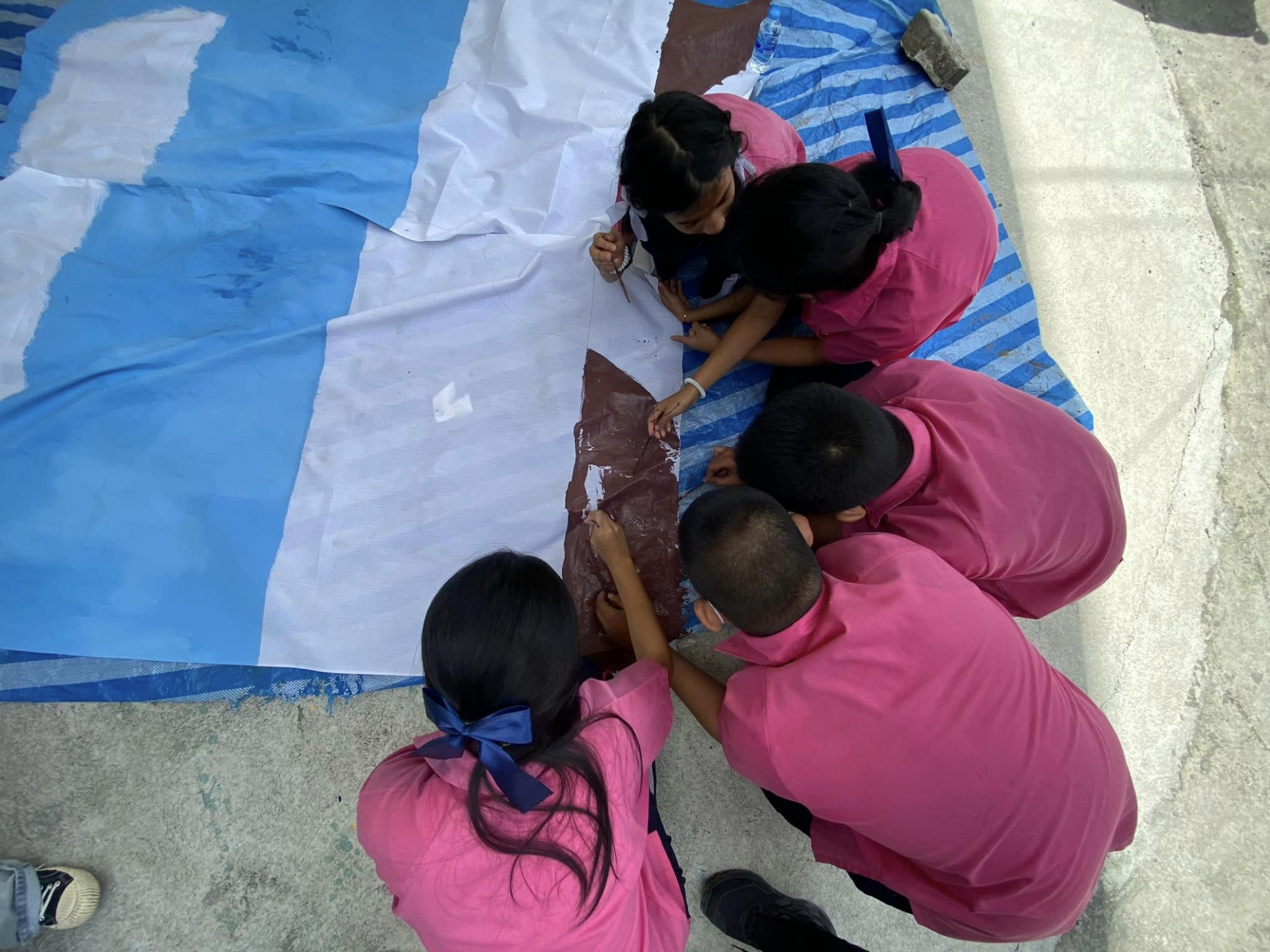





| Target | Indicator | Result |
|---|---|---|

SDG 3
GOOD HEALTH AND WELL-BEING
|
||
| 3.8 Achieve universal health coverage, including financial risk protection, access to quality essential health-care services and access to safe, effective, quality and affordable essential medicines and vaccines for all | 3.8.1 Coverage of essential health services (defined as the average coverage of essential services based on tracer interventions that include reproductive, maternal, newborn and child health, infectious diseases, non-communicable diseases and service capacity and access, among the general and the most disadvantaged population) | While the primary focus of the "Saen Saep Model" project is on educational theater and community engagement, its impact can indirectly contribute to improving the coverage of essential health services. By raising awareness of local cultural practices, including the significance of the Saen Saep Canal and its historical role in community life, the project fosters a broader understanding of health-related issues, particularly those linked to environmental and social determinants of health. Through community involvement, including students and local populations, the project promotes awareness of broader public health issues, potentially enhancing service access and delivery. Additionally, the collaborative network between Srinakharinwirot University and Wat Uthai Tharam School creates opportunities for integrating health education into broader social development initiatives, which could help improve access to essential health services, particularly for disadvantaged populations. |

SDG 4
QUALITY EDUCATION
|
||
| 4.3 By 2030, ensure equal access for all women and men to affordable and quality technical, vocational and tertiary education, including university | 4.3.1 Participation rate of youth and adults in formal and non-formal education and training in the previous 12 months, by sex | The "Saen Saep Model" project can positively influence the participation rate of youth and adults in both formal and non-formal education and training. By integrating educational theater into the community, the project fosters a learning environment that extends beyond traditional classroom settings, promoting active participation in non-formal education. Students from Wat Uthai Tharam School, as well as community members, are exposed to innovative educational methods that encourage engagement in lifelong learning and skills development. The collaborative network between Srinakharinwirot University and the local school creates opportunities for further training and educational activities that can reach a broader segment of the community, including youth and adults. The project highlights the value of learning through culture, which can motivate individuals to participate in both formal education programs and informal training activities. By engaging both male and female participants, the project contributes to increasing overall participation rates in education and training, supporting the development of a more informed and active community. |
| 4.7 By 2030, ensure that all learners acquire the knowledge and skills needed to promote sustainable development, including, among others, through education for sustainable development and sustainable lifestyles, human rights, gender equality, promotion of a culture of peace and non-violence, global citizenship and appreciation of cultural diversity and of culture's contribution to sustainable development | 4.7.1 Extent to which (i) global citizenship education and (ii) education for sustainable development, including gender equality and human rights, are mainstreamed at all levels in (a) national education policies; (b) curricula; (c) teacher education; and (d) student assessment | The "Saen Saep Model" project contributes to the integration of global citizenship education and education for sustainable development, including gender equality and human rights, by fostering awareness of cultural heritage, environmental sustainability, and social responsibility. Through its focus on local traditions, particularly the Saen Saep Canal, the project encourages students and community members to engage with the cultural and environmental issues that shape their lives, promoting a sense of global and local citizenship. The project’s interdisciplinary approach, combining the arts with social and environmental themes, aligns with the broader goals of sustainable development, emphasizing the importance of preserving cultural heritage and respecting human rights. By raising awareness of gender equality and involving both male and female participants in community activities, the project also contributes to fostering inclusive education. This aligns with national education policies that aim to integrate sustainable development goals and human rights education into curricula, teacher training, and student assessment, ensuring that students are equipped with the knowledge and values needed to contribute positively to both local and global communities. |

SDG 4
QUALITY EDUCATION
|
||
| 4.1 By 2030, ensure that all girls and boys complete free, equitable and quality primary and secondary education leading to relevant and effective learning outcomes | 4.1.1 Proportion of children and young people (a) in grades 2/3; (b) at the end of primary; and (c) at the end of lower secondary achieving at least a minimum proficiency level in (i) reading and (ii) mathematics, by sex | The "Saen Saep Model" project indirectly supports improving the proficiency levels in reading and mathematics for children and young people, particularly through its focus on educational theater. By engaging students in creative and interactive learning experiences, the project helps develop critical thinking, communication, and problem-solving skills, which are essential for academic achievement, including proficiency in reading and mathematics. The theater performances, which often incorporate storytelling, problem-solving, and discussions, contribute to students' literacy development and cognitive skills. Additionally, by addressing local cultural contexts and integrating educational content, the project supports a deeper connection to learning, potentially enhancing academic outcomes, including those measured by proficiency levels in reading and mathematics, at various stages of education (grades 2/3, end of primary, and end of lower secondary). The initiative's emphasis on community involvement and collaborative learning further strengthens students' engagement with educational content, fostering improved academic performance across both male and female students. |
Academic Service Project for Society: "Saen Saep Model" (Academic Year 2022)
Educational Theater for Enhancing Learning for Primary School Students
Objectives:
To enable students to understand the concepts, structures, components, and methods of scriptwriting, as well as the process of organizing and performing educational theater.
To provide students with hands-on experience in producing educational theater aimed at enhancing learning.
To integrate interdisciplinary knowledge, particularly from the social sciences, with the field of educational studies.
To offer academic services that provide knowledge, insights, and benefits to the beneficiaries through educational theater aimed at improving learning.
To provide academic services to society in the strategic area designated by the Faculty of Fine Arts through the "Saen Saep Model."
The project emphasizes interdisciplinary integration, combining knowledge from social sciences and educational studies to create value through the activities. The goal is for students to apply their acquired knowledge and skills in a practical context, enabling them to create educational theater productions. These productions are designed to raise awareness and address issues affecting the community, encouraging students to engage in critical thinking and problem-solving through the theater. Additionally, they are given the opportunity to exchange ideas and discuss issues that emerge from the performances, which further promotes learning and reflection.
Students gained knowledge and skills in producing educational theater aimed at enhancing learning.
Students from Wat Uthai Tharam School acquired knowledge, insights, and benefits from the educational theater performance.
Students expressed satisfaction with the academic service provided to society through the "Saen Saep Model" in the strategic area.
A collaborative network was established between Srinakharinwirot University and Wat Uthai Tharam School to address issues and contribute to future social development.
Summary of Knowledge Application:
The project generated meaningful outcomes by raising awareness among students and local communities about the value and significance of traditional performing arts and the cultural importance of local waterways, which have long been integral to Thai life. The Saen Saep Canal, in particular, is a historically significant waterway that continues to play a role in the daily lives of the local community. The project helped deepen the understanding of the canal's history and its ongoing relevance as a site for transportation and cultural activities. This initiative was also an essential component of the strategic academic services provided by the Faculty of Fine Arts, reinforcing the importance of education and community engagement.
